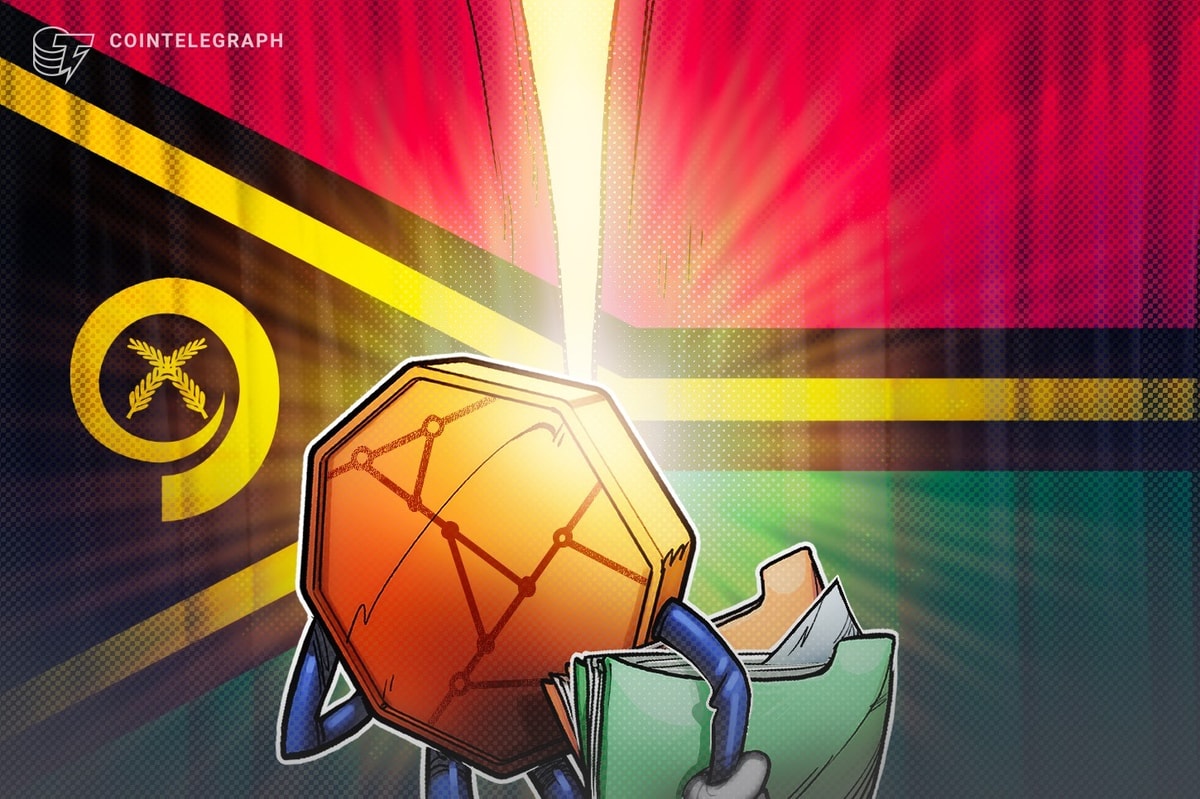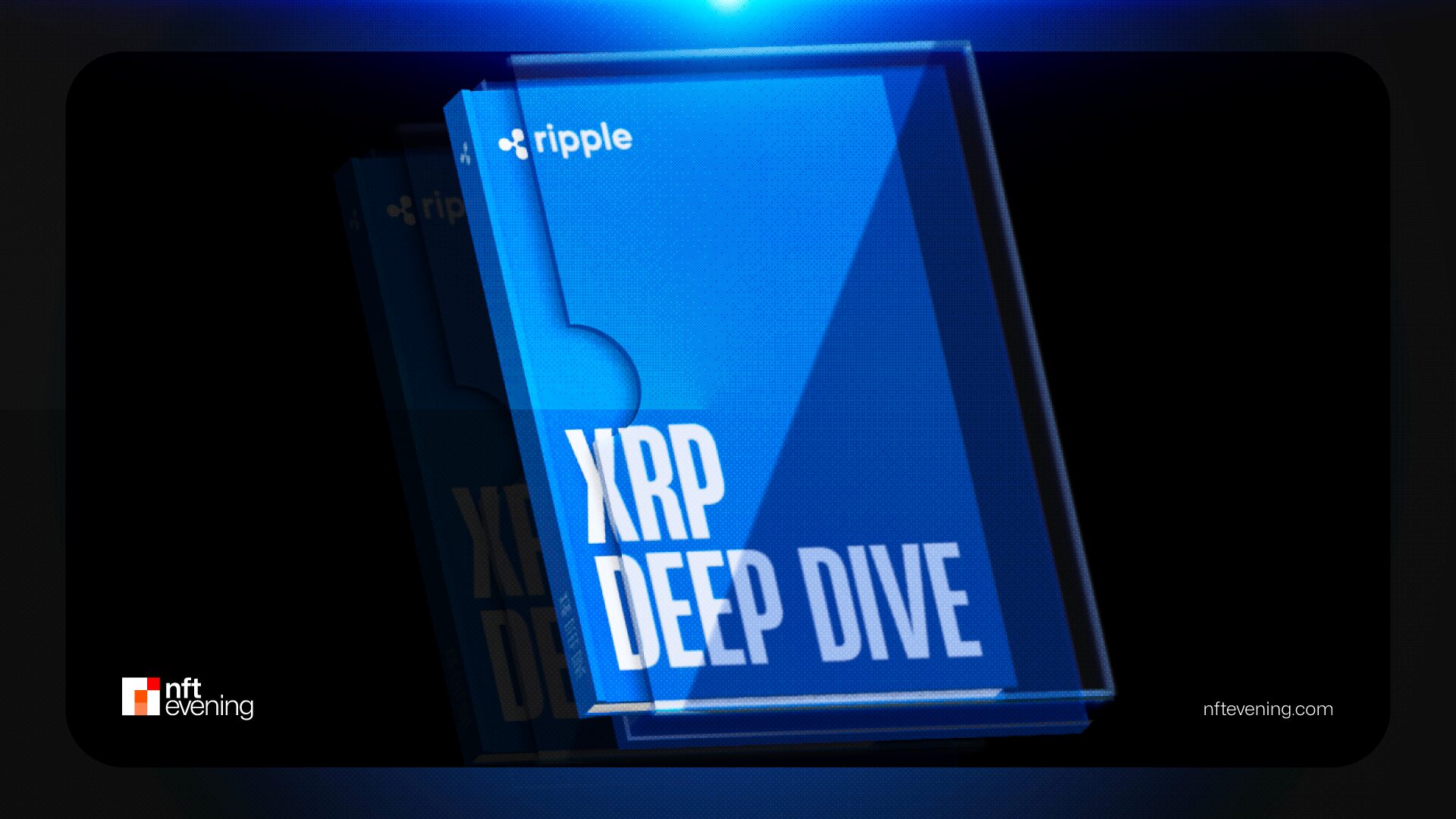In 2025, XRP continues to capture significant attention from both seasoned investors and crypto newcomers alike. As Ripple’s primary digital asset, XRP finds itself at a crucial juncture, influenced by regulatory victories, increasing adoption of stablecoins, and fierce market competition.
This article provides an objective, in-depth analysis of XRP’s latest developments, long-term prospects, and inherent risks, empowering readers to make informed decisions about its future potential.

Introduction
In 2025, XRP continues to capture the attention of both individual investors and newcomers to the cryptocurrency space. As the digital currency associated with Ripple, XRP has experienced significant fluctuations and pivotal events.
Learn more: XRP, ACH, XLM, AMP: Comparison of Payment Platforms
This article provides an objective analysis of XRP’s potential, encompassing recent supportive news, favorable market conditions, long-term outlook, and inherent risks. We will also compare XRP with other alternative and complementary cryptocurrencies (such as stablecoins RLUSD, USDT, and Ethereum) and review various price forecasts for the 2025–2030 period. The goal is to offer a balanced perspective that is accessible to newcomers while providing sufficient depth for individual investors.
Recent Supportive News
XRP has recently benefited from several positive developments that bolster its growth trajectory:
SEC Drops Lawsuit Against Ripple, Clarifying XRP’s Legal Status
SEC Drops Lawsuit Against Ripple, Confirming XRP Is Not a Security: In March 2025, the U.S. Securities and Exchange Commission (SEC) officially concluded its longstanding legal battle with Ripple Labs by agreeing to a reduced settlement fine of $50 million, without Ripple admitting any wrongdoing or liability. This significant development reinforces the landmark July 2023 ruling, explicitly clarifying that XRP tokens traded on public cryptocurrency exchanges do not constitute securities under U.S. federal law.
The resolution effectively removes major regulatory hurdles and uncertainties that previously surrounded XRP’s legal status in the United States. As a result, XRP is now positioned to operate with greater regulatory clarity and increased market confidence, paving the way for broader adoption among investors and financial institutions that were previously cautious due to ongoing legal concerns.
Ripple Launches RLUSD Stablecoin, Expanding into the Stablecoin Market
In December 2024, Ripple took a significant step forward by launching its own stablecoin, Ripple USD (RLUSD), designed to maintain a stable value pegged 1:1 with the U.S. dollar. RLUSD is notably issued across two major blockchain networks: the XRP Ledger and Ethereum, providing users with enhanced flexibility, interoperability, and access to multiple decentralized finance (DeFi) ecosystems.
Shortly after its launch, RLUSD rapidly attracted attention, surpassing a circulating supply of over $176 million within a few months. Additionally, RLUSD witnessed a remarkable 319% increase in its trading volume, reaching approximately $39.9 million. This substantial growth underscores RLUSD’s strong acceptance and indicates Ripple’s successful entry into the competitive stablecoin market, potentially complementing XRP by offering a stable, transparent, and fully compliant asset for transactions, liquidity management, and value storage.
According to @bgarlinghouse at @blockworksDAS, it is believed that we’ll see a 10X of the stablecoin market cap within 5 years. Brad seemed to hint that this estimate is conservative. There’s a reason @Ripple created its own stablecoin. And when you listen to what… https://t.co/6WyoUKZkN1
— John E Deaton (@JohnEDeaton1) March 21, 2025
Franklin Templeton Files for XRP ETF, Signaling Rising Institutional Interest
In March 2025, global asset management giant Franklin Templeton officially filed an application to launch an exchange-traded fund (ETF) designed to track XRP’s spot market price. This strategic move represents a notable milestone, highlighting the growing interest from institutional asset managers in diversifying cryptocurrency investments beyond established coins like Bitcoin and Ethereum.
If approved, the XRP ETF could significantly expand XRP’s appeal among traditional investors and institutional clients by providing a regulated, transparent, and easily accessible investment vehicle. This development not only validates XRP’s maturity in the digital asset space but also potentially accelerates mainstream adoption by opening XRP to broader investor participation.
Ripple Enters Crypto Custody Sector with “Ripple Custody” Trademark
In February 2025, Ripple Labs filed a trademark application for “Ripple Custody,” marking its official entry into the digital asset custody sector. This move signals Ripple’s intention to broaden its service portfolio beyond cross-border payments by providing secure, institutional-grade cryptocurrency custody solutions. The trademark filing covers software and services related to the safekeeping of digital assets, including private key management and crypto wallet infrastructure.
As regulatory clarity around crypto custody continues to improve, Ripple’s expansion into this space positions the company to better serve financial institutions, enterprises, and potentially government entities looking for compliant, secure asset storage solutions. This diversification strategy aligns with Ripple’s broader vision of becoming a multi-service infrastructure provider within the evolving digital finance landscape.
DFSA Approves Ripple’s Crypto Payments in DIFC, Expanding Presence in the Middle East
In early 2025, Ripple received a significant regulatory green light from the Dubai Financial Services Authority (DFSA), securing a license to offer regulated crypto payment services within the Dubai International Financial Centre (DIFC). This approval makes Ripple the first blockchain-based payments provider officially licensed to operate in this prestigious financial hub. The DIFC serves as a key gateway for financial services in the Middle East, and DFSA’s endorsement reflects growing regional support for blockchain innovation.
Learn more: Ripple gained licenses from DFSA, enabling activities in the UAE
With this license, Ripple can now offer its crypto-powered payment solutions—such as RippleNet and On-Demand Liquidity (ODL)—to financial institutions and businesses operating in or through Dubai. The move not only strengthens Ripple’s footprint in the Middle East but also opens new opportunities for institutional adoption of XRP as a bridge currency in cross-border transactions across emerging markets.
These developments have fostered a positive sentiment within the XRP community, reinforcing confidence in XRP’s integration into mainstream finance.
Favorable Stablecoin Market Conditions
The current market environment is conducive to the growth of stablecoins like RLUSD:
- Stablecoin Market Capitalization Growth: As of March 2025, the total market capitalization of stablecoins reached approximately $230.45 billion, marking a 56% increase compared to the same period last year. This surge reflects the rising demand for stablecoins in transactions and value storage.
- Projections for Stablecoin Market Expansion: Analysts predict that the stablecoin market could double to $400 billion in 2025, especially if favorable legislation is enacted. Ripple’s CEO, Brad Garlinghouse, estimates that the stablecoin market could expand tenfold by 2030, reaching approximately $2.8 trillion.
- RLUSD’s Competitive Positioning: Amid this dynamic landscape, RLUSD emerges as a formidable contender. Issued by Ripple, a reputable industry player, RLUSD targets the transparent and compliant stablecoin segment. Fully backed by U.S. dollar deposits, U.S. government bonds, and cash equivalents, RLUSD operates across multiple blockchains, including the XRP Ledger and Ethereum, facilitating access to diverse ecosystems.
In essence, the burgeoning stablecoin sector provides a solid foundation for XRP and Ripple to advance their payment solutions, including On-Demand Liquidity (ODL) utilizing XRP and the RLUSD stablecoin.
Long-Term Prospects for XRP
Looking ahead, the long-term potential of XRP in 2025 and beyond will depend on whether it can truly solve real-world challenges in the global financial system. Below are some notable long-term prospects for XRP:
Role in International Payments (vs. SWIFT)
XRP was initially designed to revolutionize cross-border payments, positioning itself as a direct competitor to the outdated SWIFT system. Its key advantages lie in speed and cost efficiency—XRP transactions are completed in just a few seconds with extremely low fees, while traditional SWIFT transfers can take several days and often involve high intermediary fees.
In practice, the XRP Ledger is capable of processing near-instantaneous global transactions, making cross-border payments faster and cheaper than conventional banking infrastructure. Ripple has developed RippleNet and the On-Demand Liquidity (ODL) solution, which uses XRP as a bridge asset to enable instant settlement between fiat currencies. This allows banks and remittance providers to send money in one currency and receive it almost instantly in another, without the need for pre-funded accounts.
If, over time, XRP gains widespread acceptance among financial institutions, it could become the backbone of a next-generation global payment system, supplementing or even replacing parts of SWIFT—especially in corridors where costs are high or infrastructure is lacking.
However, competing with SWIFT is no small feat. The SWIFT network is vast and entrenched, and it too is exploring blockchain-based solutions to enhance its own infrastructure. Therefore, XRP must clearly demonstrate a superior value proposition in order to gain significant market share in this space.
Integration with Central Bank Digital Currencies (CBDCs) in Africa and Asia
Ripple has taken a proactive role in participating in numerous CBDC (Central Bank Digital Currency) pilot projects worldwide, viewing this as a major opportunity for XRP and the XRP Ledger (XRPL). In Asia, Ripple partnered with the Royal Monetary Authority of Bhutan to pilot a digital currency for the nation. Additionally, Ripple supported the Republic of Palau in launching a national stablecoin built on the XRP Ledger.
These initiatives highlight that the XRP Ledger is well-suited for issuing and managing CBDCs, thanks to its fast transaction speed, high throughput, and strong security features.
In Africa, where there’s a significant need for low-cost and inclusive payment solutions, Ripple has explored ways to connect CBDCs to mobile money systems and digital wallets, aiming to drive financial inclusion across underserved populations.
If more developing countries in Africa and Asia choose to use the XRP Ledger as the infrastructure for their CBDCs—or as a bridge for cross-border transactions—XRP could become a liquidity bridge between national digital currencies.
Analysts believe that the ongoing wave of CBDC adoption could bring substantial benefits to XRP, provided it becomes integrated into these next-generation financial systems. To achieve this, Ripple must continue to build strong relationships with central banks and demonstrate that its network meets the stringent demands of financial regulation, security, and scalability.
Scalability and Technological Expansion: Smart Contracts and Asset Tokenization
While the XRP Ledger (XRPL) is widely recognized for its fast payment capabilities, one of its historical limitations has been the lack of native support for complex smart contracts, as seen on platforms like Ethereum. However, Ripple and the XRPL community have been actively working to expand the ledger’s capabilities.
Currently, the XRP Ledger supports custom token issuance and NFTs on-chain. In addition, two major approaches are being developed to bring smart contract functionality to XRPL:
- EVM-Compatible Sidechain – A parallel chain that allows developers to run decentralized applications (dApps) using Solidity, the same programming language used on Ethereum. This sidechain is designed to interact with XRPL while enabling full Ethereum compatibility.
- Hooks – A proposal to integrate lightweight smart contract logic directly onto the XRPL, allowing developers to embed conditional logic at the ledger level without requiring a separate chain.
If these initiatives are successfully implemented, XRPL would gain the ability to host DeFi applications, lending protocols, derivatives, and asset tokenization – all while maintaining the XRP Ledger’s inherent advantages of high speed and low transaction costs.
Seems like there’s confusion over the programmability blog post we put out yesterday, so let me clear a few points up:
Ripple simply cannot (and absolutely doesn’t want to) unilaterally change the XRP Ledger. The blog post is Ripple saying that we see the value in bringing…
— David “JoelKatz” Schwartz (@JoelKatz) September 4, 2024
For example, tokenizing traditional assets such as real estate, equities, or commodities on XRPL could unlock new global markets, enabling near-instant settlement of trades across borders. This would position XRPL as a powerful infrastructure for the next generation of financial systems.
With Ripple’s support – including the launch of a development fund worth hundreds of millions of dollars to grow the XRPL ecosystem – investors have reason to be optimistic. The XRPL is well on its way to adapting to modern blockchain trends and extending XRP’s utility beyond payments, into the broader world of decentralized finance.
Potential Risks
While XRP has numerous growth drivers, investors must also remain cautious of the various risks that may impact its future:
Reliance on Ripple and Centralization Concerns
Unlike Bitcoin or Ethereum, which are supported by robust decentralized communities, XRP’s success has largely been tied to Ripple Labs. The company still holds a significant portion of XRP (through escrow and periodic sales) and plays a crucial role in the development of the XRP Ledger (XRPL). This dependency has led to ongoing concerns about XRP’s decentralization.
Critics have labeled XRP a “centralized cryptocurrency” or even a “security created by Ripple.” If Ripple were to face financial trouble or shift its strategic direction, the XRP ecosystem could be severely affected. Moreover, a significant number of XRPL’s validator nodes are operated by Ripple-affiliated entities, raising concerns about network control.
Ripple has attempted to alleviate these concerns by committing to decentralize the validator network and ensure transparency in XRP issuance. Still, investors should consider this concentration risk—one of the primary differences between XRP and truly decentralized projects.
Competition from Stellar (XLM), Hedera (HBAR), and Algorand (ALGO)
In the blockchain payments sector, XRP faces stiff competition:
- Stellar (XLM): Founded by a former Ripple co-founder, Stellar has a nearly identical technical setup (around 1,000 TPS, 5-second settlement, near-zero fees) and targets the unbanked through partnerships with nonprofits.
- Hedera Hashgraph (HBAR): Uses an alternative to blockchain called Hashgraph, theoretically supporting up to 100,000 TPS with extremely low fees (~$0.001). Hedera is governed by a council of major corporations, including Google and IBM, positioning it for enterprise and public-sector use.
- Algorand (ALGO): A modern Proof-of-Stake blockchain with over 1,000 TPS and minimal transaction fees (~$0.0001). Algorand has been chosen for initiatives such as the Marshall Islands’ digital currency pilot, thanks to its scalability and security.
These platforms target similar use cases as XRP: fast, low-cost payments and bridging traditional finance. If XLM, HBAR, or ALGO secure major partnerships with banks or governments, XRP could lose market share. For instance, Stellar previously partnered with IBM to launch the World Wire payment network, and Algorand supports government asset issuance.
Learn more: XRP, ACH, XLM, AMP: Comparison of Payment Platforms
Even legacy systems like SWIFT are exploring blockchain-based solutions (e.g., in collaboration with Chainlink), intensifying competition. XRP must continuously innovate and expand partnerships to stay ahead.
Global Regulatory Risk
Although the SEC case in the U.S. has brought some clarity, XRP still faces a complex regulatory environment globally. Each country approaches crypto regulation differently:
- Japan has declared XRP is not a security and actively supports its use (e.g., Ripple’s major partnership with SBI Holdings).
- China has banned crypto trading entirely, leaving XRP with no access to that market.
- Europe will soon implement the MiCA regulation, which requires crypto issuers to meet strict transparency and risk management standards. Ripple may need to register and comply to operate in the EU.
- Policy Shifts: Any country tightening cross-border crypto transactions (due to AML or tax concerns) could reduce XRP’s transaction volume. Additionally, future governments—such as in the U.S.—could revert to harsher crypto policies. Central banks issuing CBDCs may even restrict the use of private cryptocurrencies.
Such regulatory developments could negatively impact XRP’s adoption and valuation globally.
Broader Cryptocurrency Market Risk
XRP’s price and liquidity remain closely correlated with overall crypto market trends and Bitcoin. If macroeconomic conditions worsen (e.g., rising interest rates, economic downturn), the market may enter a bearish cycle, pulling XRP down with it.
Even unrelated events – like the collapse of a major exchange or a stablecoin de-pegging- can shake investor confidence, triggering sell-offs across the market, including XRP.
Overexuberance can also backfire: XRP soared above $3 during the 2017 bull run only to experience a prolonged decline afterward.
Investors must accept the inherent volatility and risk in crypto. Factors such as hacking, technical bugs, or community disagreements (e.g., forks) can all harm token value. Proper risk management and portfolio diversification are essential when investing in XRP or any cryptocurrency.
Comparison with Alternative and Complementary Coins
|
Coin |
TPS & Speed | Transaction Fee | Market Cap |
Primary Applications |
| XRP | ~1,500 TPS, ~3-5s | ~$0.0002 | ~$120B | Cross-border payments, liquidity bridge |
| Stellar (XLM) | ~1,000 TPS, ~5s | ~$0.0000009 | ~$9B | Micro-payments, financial inclusion |
| Hedera (HBAR) | Up to 100,000 TPS, ~5s | ~$0.001 | ~$8B | Enterprise apps, asset tokenization |
| Algorand (ALGO) | ~1,000+ TPS, ~4s | ~$0.0001 | ~$1.8B | Smart contracts, DeFi, CBDC pilot |
| Ethereum (ETH) | ~15 TPS, 1-5 minutes | Variable, $ high | ~$400B | DeFi, NFTs, smart contracts |
The comparison above highlights XRP’s advantages in terms of speed and transaction costs compared to most of its competitors (only theoretically surpassed by HBAR in TPS, though HBAR currently achieves only a few hundred TPS in public networks). XRP’s transaction fees are near zero, on par with Stellar and Algorand, and significantly lower than Ethereum’s. In terms of market cap, XRP ranks in the top 5, significantly higher than other payment-oriented altcoins like XLM, HBAR, and ALGO (all under $10 billion). This indicates greater adoption and liquidity for XRP.
However, each project has its unique direction: Stellar focuses on remittances and unbanked users; Hedera targets enterprise applications with a unique tech and strong governing council; Algorand emphasizes green infrastructure, is open to DeFi, and has been chosen for CBDC pilots.
Ethereum, being the most widely-used smart contract platform, doesn’t directly compete in payments but complements XRP’s ecosystem by supporting many DeFi apps that could connect to XRP (e.g., via bridges, and now RLUSD on Ethereum).
Stablecoins and Complementary Roles
Stablecoins such as RLUSD and USDT also play critical supporting roles. USDT (Tether) is the largest stablecoin used widely for trading and as a base currency on exchanges. In payment networks, stablecoins help reduce volatility in value transfers. RLUSD by Ripple complements XRP: businesses can temporarily hold value in RLUSD (a stable asset) before or after converting to XRP to benefit from lower fees.
RLUSD can also operate on the XRP Ledger, increasing transaction volume and liquidity on the network. Similarly, Ethereum complements XRP by hosting DeFi apps, NFTs, and other stablecoins (USDC, DAI, etc.). XRP benefits from this ecosystem through bridges and the EVM sidechain. Thus, XRP is not isolated—it moves alongside stablecoins and smart contract platforms to form a diverse digital finance landscape.
XRP Price Forecasts
Current Technical Pattern
XRP is currently trading within a descending triangle pattern, indicating persistent selling pressure as each subsequent high is lower than the previous one, while the support zone around 2.15 – 2.20 USDT remains intact.
This pattern often signals a potential strong breakout, especially as the price range continues to narrow.
LONG Trade Setup
Entry Zone: around 1.8547 USDT
- This is a strong support zone that has been tested multiple times since early March 2025.
- The price is also approaching the 200 EMA – a key long-term support level that may trigger a price rebound.
Stop Loss: Below 1.7043 USDT
- This is the final support level – a breakdown here could invalidate the long-term uptrend structure.
- Marked as the critical reaction zone, indicating a strong support area in technical analysis.
Take Profit Targets:
- TP1: 2.45 USDT – aligns with local resistance and the 200 EMA.
- TP2: 2.60 USDT – meets the descending trendline.
- TP3: 2.90 – 3.00 USDT – if the price breaks out of the descending trendline, it may confirm a new bullish trend.
Technical Indicators
- The EMA 20/50/100/200 are converging, indicating the current price is at an equilibrium between buyers and sellers.
- Volume has been gradually decreasing → a sign of market anticipation before a breakout.
- RSI and MACD are neutral, supporting the consolidation phase within the triangle.
Risks and Considerations
- The price has not yet broken above the descending trendline, so it’s essential to wait for a confirmed breakout with volume before entering.
- The narrowing price range suggests an imminent volatile move (either breakout or breakdown).
- Investors should manage risk carefully, especially when entering at the support zone without clear confirmation.
Conclusion
In 2025, XRP is in a crucial position, having successfully navigated a significant regulatory obstacle, capitalizing on the growth of stablecoins and CBDCs, and preparing to fortify its position in the global payments arena. Ripple is expanding its services (RLUSD stablecoin, digital asset custody) and forging partnerships across the globe—from the U.S. and Europe to the Middle East, Asia, and Africa—laying the foundation for long-term application-driven growth.
Read the full article here





